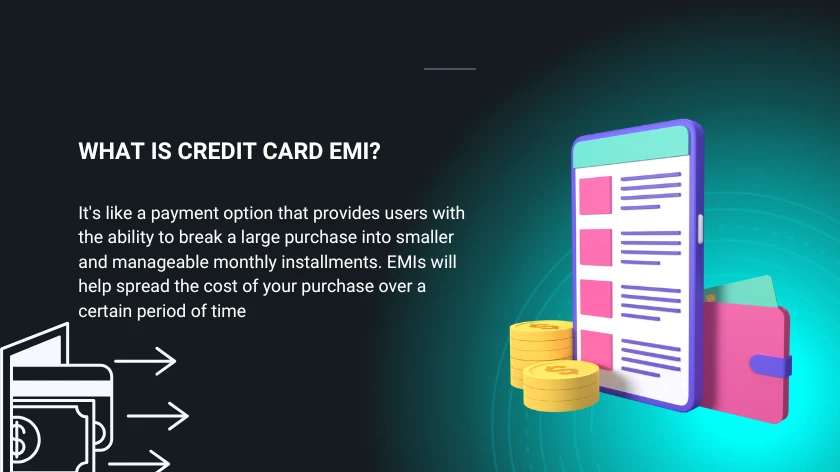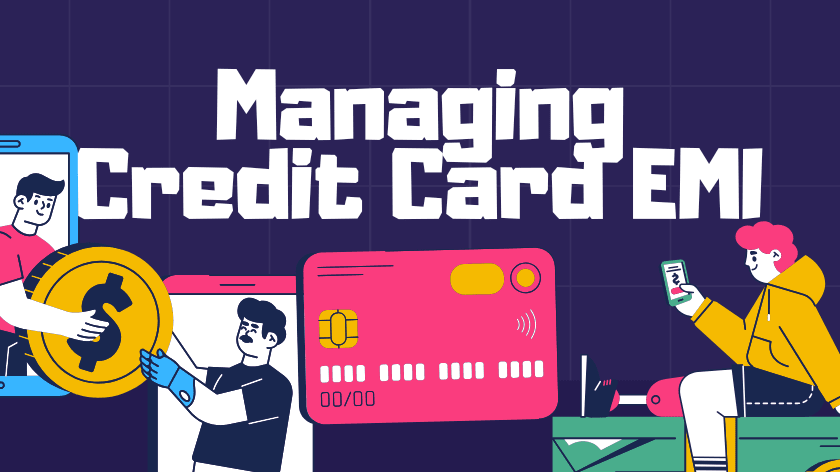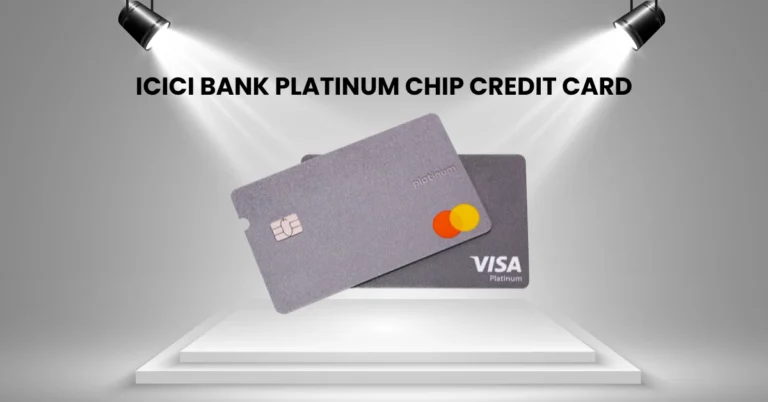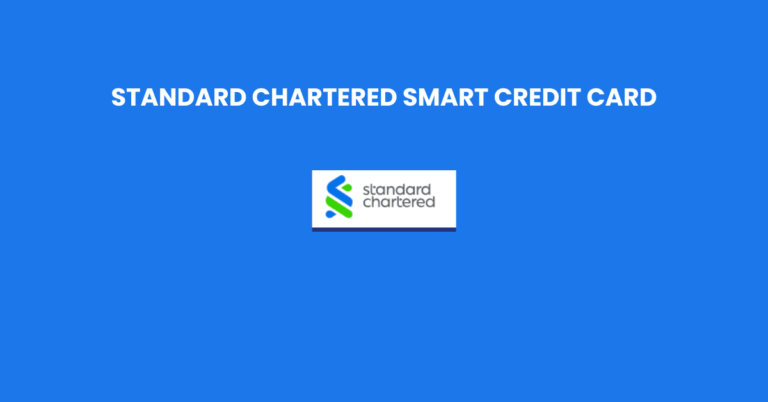How does credit card EMI work?

You can pay for big purchases in small and easy monthly installments through a facility called Credit Card EMI. In this guide, we’ll explain what is Credit Card EMI, how it works, and why it could be your go-to solution to finance those must-have purchases that are just out of reach.
That might just be the complete game-changer for you in this world that runs on financial responsibilities and instant gratification. The catch there, though, is that, although it presents interesting opportunities, it is necessary to understand how this financial tool works. Is it working out to its best potential or stealing silently from your bank account?
Let’s dive in and turn your credit card into a powerful ally in your financial journey!
Understanding what is Credit Card EMI?
What is Credit Card EMI? It’s like a payment option that provides users with the ability to break a large purchase into smaller and manageable monthly installments. If you’re wondering what is credit card EMI, think of it as a way to spread your expenses over time. EMIs will help spread the cost of your purchase over a certain period. Normally, this is done between 3 to 24 months, as against having to pay for it in full at the front or even paying some higher interest fees. Advantages of using EMI for credit card purchases.
Benefits of using Credit Card EMI for purchases
If you use the EMI option for credit card purchases. This offers you several benefits:
- Improved affordability
- Better budgeting
- Lower interest rates compared to regular credit card balances
- Flexibility in repayment terms
A. Balance transfer EMI
With a balance transfer EMI, you can transfer your current outstanding balances on one credit card to another credit card, usually at a lower rate of interest. It helps you in debt consolidation and might reduce the overall interest paid.
B. Post-purchase EMI conversion
The post-purchase EMI conversion will allow you to convert the purchase made through the newly acquired credit card into EMIs after making the payment. It helps in flexibility in managing finances in terms of large payment instances because it breaks the payments into installments.
Knowing these two types of EMI choices with a credit card will enable you to make the right decisions about efficiently managing your credit card spending. And then comes the next point we are about to discuss: how different factors come into play in calculating credit card EMI and its terms.
Pros and Cons of Credit Card EMI
Now that we have understood what factors are related to credit card EMI, let us move on towards its advantages and disadvantages. This is going to guide you in making proper decisions about using EMI at the right times and refraining from using it at any time. For a seamless digital experience, understand how to pay with a credit card on PhonePe—a method often eligible for EMI conversion.
Advantages of using Credit Card EMI
- Instant possession: You can buy essentials immediately and pay for the expenses over time. It is easy to budget when the monthly installments are fixed.
- Help with budgeting: It is simple to plan your expenses if your monthly payments are fixed.
- Flexibility: There are ample credit cards that come with varied EMI terms.
- No collateral needed: Credit card EMIs do not require any kind of collateral, as is the case with traditional loans.
Potential Drawbacks
Though credit card EMI is convenient, one needs to be in the know of potential drawbacks.
- Interest expenses: The moment you submit an EMI for buying a particular product, there is always a possibility that you would end up paying interest.
- Lower credit limit: Once an EMI reduces your available credit amount upon the deduction of said amount from your credit limit.
- Extended payback period: You would have committed to pay over a much longer term, which will likely have an effect on your future decisions relating to finances.
- Unstated costs: Sometimes, the EMI offers come with processing or foreclosure charges.

Tips for Managing Credit Card EMI
After discussing all aspects of credit card early pay-offs, let’s move on to effective control of credit cards. Here are a few important tips that may help you make maximum utilization of EMI without going astray:
A. Avoiding defaults
Defaulting on your EMI can prove pretty disastrous. Here are a few strategies that may help you avoid this:
- Set up automatic payments so you never miss a deadline again.
- Calendar or phone reminders that will tell you when your EMI is due.
- Keep a fraction of the amount in your account in case of costs that you had no prior knowledge of.
B. Tracking EMI payments
Keeping track of EMI payments is the key to maintaining financial stability. You can opt for the following:
- Mobile banking apps to track the EMI transactions.
- Keep an updated spreadsheet of payments and dates.
- Periodically double-check the accuracy of your credit card statements.
D. Comparing EMI offers
EMI offers are not of the same variety. To get the best deal:
- Compare the interest rates that various banks and credit card houses are offering
- Look for special deals that are available with 0% or less.
- Consider opting for free EMI if it is given for your purchases.
- All the charges incorporated into the total cost of an EMI scheme have to be taken into account.
These will help you manage your credit card EMIs better, reduce your expenses, and help you yield maximum benefits. Now, we shall see how EMI payments affect your score on a credit card.
Impact of EMI on Credit Card Score
Your credit score is one of the critical factors determining your creditworthiness, and EMI in a credit card account can play a significant role in it as well. Let’s now determine in what ways EMIs affect your credit profile:
Long-term effects of multiple EMIs
Having multiple EMIs can have both positive and negative impacts on your credit score.
- Positive Effects:
- Demonstrates ability to manage multiple credit accounts
- Shows responsible credit behavior if payments are made on time.
- Negative effects:
- Increases overall debt burden
- May lead to a higher credit utilization ratio.
Payment history and credit score
Your payment history is the most crucial factor in determining your credit score. Here’s how EMI payments affect it:
- On-time payments: Boost your credit score
- Late payments negatively impact your score
- Missed payments: severe negative impact on your score
How EMI affects credit utilization
To fully understand what is Credit Card EMI refers to, the ratio of the credit card balance to the credit limit. In many ways, EMI may affect this:
- Initial impact: This is nothing but converting a purchase into EMI, which will reduce your credit utilization temporarily.
- Long-term effect: In the long run, the money you pay in EMIs would, however, reduce the credit utilization slowly and steadily.
- Multiple EMIs: This may also lead to an overall increase in credit utilization unless proper management is done over it.
It is very crucial that while using EMIs, you keep your credit utilization below 30%. Plus, you should pay all the EMIs due in time. Having discussed the impact of EMIs on your credit score, let us now see a few practical tips for managing the credit card EMIs.
Read More:
Conclusion
Understanding what is Credit Card EMI reveals the flexible way of managing large purchases, allowing customers to spread payments over time. You can make smart use of this payment option if you are well aware and understand what Credit Card EMI is and how it works. EMIs are determined, and the options open for you, as well as factors that affect them. While learning what Credit Card EMI is, it’s also important to weigh the pros against the cons.
Always use EMI intelligently and keep in mind the impact it has on your credit rating. You can enjoy this facility as well as work upon a clean credit profile by being watchful about your repayments as well as keeping track of the EMIs of the credit cards as suggested. After all, the proper usage of EMI is all about careful thinking and regular repayment.
Frequently Asked Questions (FAQs)
1. How much interest is charged on credit card installment loans?
Different banks and credit card issuers levy different interest rates on their credit card EMIs.
2. Which is preferable, full credit card payments or EMIs?
Credit card or its EMI services are the choice of the cardholder. If you can service your credit card dues every month without any outstanding, then routine credit card usage is possible. If you cannot pay the entire bill for your credit card before the payment due date, EMIs for credit cards are applicable.
3. How do credit cards and credit card EMIs differ from one another?
Spending money on transactions with a credit card costs the issuer money. At the end of the month, you pay the issuer back. Should you be unable to repay the loan in full, you may be required to carry forward your payment, which carries a high interest rate. In situations such as these, you have the option to choose an EMi credit card, which enables you to divide your bill payments however it best suits you.






